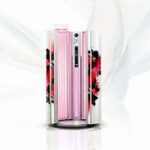Last Updated on 11 months by Francis
Negative ions research is a scientific exploration of the many potential benefits of negative ions on human health and well-being. Negative ions are scientifically proven to boost immune system function, enhance mood and energy, and regulate stress hormones, among other benefits. Researchers are currently investigating the effectiveness of negative ion therapy and exploring new ways to harness the power of this natural phenomenon to improve human health. In this article, we will take a closer look at the latest findings in negative ions research and what they mean for our health and wellness.
The Basics of Negative Ions
Negative ions are molecules that have gained an extra electron, which gives them a negative charge. They are present in the air we breathe, but in varying amounts depending on the environment. Negative ions are most commonly found near waterfalls, oceans, and mountains, which is why people often report feeling more refreshed and energized in these environments.
How Negative Ions Affect the Body
When we breathe in negative ions, they interact with our body in several ways. First, negative ions attach to positively charged particles in the air, such as dust and pollutants, which causes them to become heavier and fall to the ground. This leads to cleaner air and can reduce allergy symptoms.
Second, negative ions increase the flow of oxygen to the brain, which can improve mood, mental clarity, and overall cognitive function. Additionally, negative ions can stimulate the production of serotonin, a neurotransmitter that is responsible for regulating mood and sleep.
The Benefits of Negative Ions
Negative ions have been studied extensively for their potential health benefits. Here are some of the most notable findings:
Key takeaway: Negative ions can have a significant impact on improving mood, mental health, reducing stress and improving sleep, and physical performance. Spending time in nature, using negative ion generators, or taking negative ion baths are all ways to increase exposure to negative ions. It is important to note that while negative ion therapy has several health benefits, it should be used as a complementary treatment to traditional medical care.
Improved Mood and Mental Health
Research has shown that negative ions can be beneficial for individuals with depression, anxiety, and seasonal affective disorder (SAD). In one study, individuals with SAD were exposed to negative ions for 30 minutes each day for five days. The researchers found that the negative ion exposure significantly improved their symptoms compared to a placebo group.
Reduced Stress and Improved Sleep
Negative ions have also been shown to reduce stress and improve sleep quality. In one study, participants who slept in a room with high levels of negative ions reported feeling more refreshed and alert upon waking up. Additionally, negative ion exposure has been shown to reduce stress hormones in the body, such as cortisol.
Improved Physical Performance
Negative ions can also improve physical performance by increasing oxygen flow to the muscles and reducing fatigue. In one study, athletes who were exposed to negative ions during exercise were able to cycle for longer periods of time and reported feeling less fatigue compared to a control group.
How to Increase Your Exposure to Negative Ions
There are several ways to increase your exposure to negative ions:
Negative ions are molecules that have an extra electron, giving them a negative charge. They are present in varying amounts in the air we breathe and most commonly found in natural environments like waterfalls, oceans, and forests. Breathing in negative ions can attach them to positively charged particles, reducing allergy symptoms and cleansing the air. It can also improve mood, mental clarity, cognitive function, sleep quality, and physical performance by stimulating serotonin production, increasing oxygen flow to the brain and muscles, and reducing stress and fatigue. Negative ion generators and baths can also increase exposure, but it’s important to address myths like negative ions harming health, generators emitting harmful ozone levels, and negative ions being a cure-all for all health conditions. Negative ion therapy should be a complementary treatment to traditional medical care.
Spend Time in Nature
As mentioned earlier, negative ions are most commonly found in natural environments such as near waterfalls, oceans, and forests. Spending time in these environments is an easy way to increase your exposure to negative ions.
Use Negative Ion Generators
Negative ion generators are devices that release negative ions into the air. They can be used in homes, offices, and other indoor environments to increase negative ion levels.
Take Negative Ion Baths
Taking a bath with negative ion salts or using a negative ion showerhead can be a relaxing way to increase your exposure to negative ions.
Myths and Misconceptions About Negative Ions
There are several myths and misconceptions about negative ions that are important to address:
Negative Ions are Harmful
Some people believe that negative ions are harmful and can cause negative health effects. However, there is no scientific evidence to support this claim. In fact, negative ions are found in natural environments and have been shown to have several health benefits.
Negative Ion Generators are Dangerous
There have been some concerns about negative ion generators emitting ozone, which can be harmful to the lungs. However, this is only a concern with low-quality generators that do not meet safety standards. High-quality generators are safe to use and do not emit harmful levels of ozone.
Negative Ions are a Cure-All
While negative ions have several health benefits, they are not a cure-all for all health conditions. It is important to approach negative ion therapy as a complementary treatment to traditional medical care.
FAQs for Negative Ions Research
What are negative ions?
Negative ions are atoms or molecules that have gained an extra electron, resulting in a negative charge. These ions are naturally occurring in the environment, especially near waterfalls, ocean waves, thunderstorms, and in forested areas. Negative ions are also artificially produced by air ionizers or generators.
What is negative ions research?
Negative ions research is a study that explores the effects of negative ions on human health and well-being. This research investigates the benefits of negative ions for respiratory and cardiovascular health, mental and emotional well-being, and overall quality of life. It also examines the risks or drawbacks of exposure to negative ions, especially in high concentrations or in certain contexts.
What are the benefits of negative ions?
According to some research studies, negative ions can provide several health benefits, such as reducing stress, enhancing mood, improving sleep quality, boosting immunity, and reducing symptoms of allergies and asthma. Negative ions have also been found to enhance cognitive performance, such as memory, attention, and reaction time. However, more research is needed to confirm these benefits and understand the underlying mechanisms.
Are there any risks or side effects of negative ions?
Negative ions are generally considered safe in low to moderate concentrations. However, exposure to high concentrations or prolonged exposure to negative ions may cause some side effects, such as headache, dizziness, nausea, or fatigue. Negative ions may also exacerbate symptoms of some respiratory or cardiovascular conditions, especially in sensitive or vulnerable populations, such as people with asthma, COPD, or heart disease.
How can I increase my exposure to negative ions?
There are several ways to increase your exposure to negative ions, such as spending time in natural settings with flowing water, such as waterfalls, rivers, or oceans, or in forested areas with lush vegetation. You can also use artificial sources of negative ions, such as air ionizers, salt lamps, or negative ion bracelets. However, it is important to use these devices with caution and follow the manufacturer’s instructions to avoid overexposure or adverse effects.
Is negative ion therapy or treatment effective?
Negative ion therapy or treatment is a controversial and unproven practice that claims to provide health benefits by exposing the body to high concentrations of negative ions. However, there is little scientific evidence to support these claims, and in some cases, negative ion therapy may even be harmful or ineffective. Therefore, it is important to consult a qualified healthcare professional before trying any new therapy or treatment.







